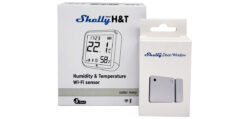
Layout, design and features …
Shelly BLU Door/Window Features
Shelly H&T Gen3 Features
Shelly BLU Door/Window Features …
The Shelly BLU Door/Window is a sensor that detects the status – open or closed – of a door or window.
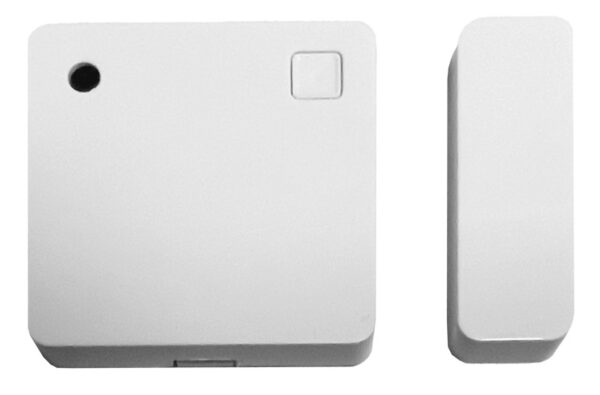
Thanks to the tilt sensor, the sensor can even detect whether a window is tilted.
In addition to the magnetic sensor and the tilt sensor, there is also a brightness sensor. This provides a value for the current ambient brightness.
Compared to its predecessor, the Shelly Door/Window 2, the new sensor is much smaller. This is mainly due to the battery.
You can see how small the Shelly Door/Window BLU is by comparing its size with a 2 Euro piece.
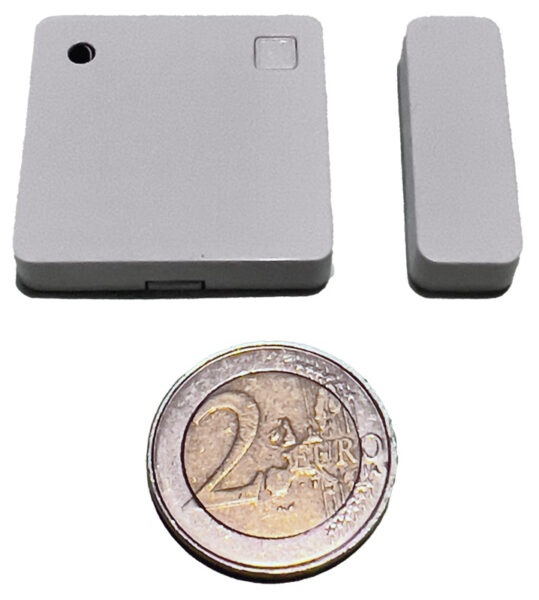
As the sensor no longer needs to generate a WiFi signal, but works with much more economical Bluetooth signals, a small CR2032 battery is still sufficient for approx. 5 years of operation. The CR2032 battery can be replaced by carefully opening the rear housing cover with a wide screwdriver, for example. This is not very convenient, but fortunately the button cell does not have to be replaced every year.
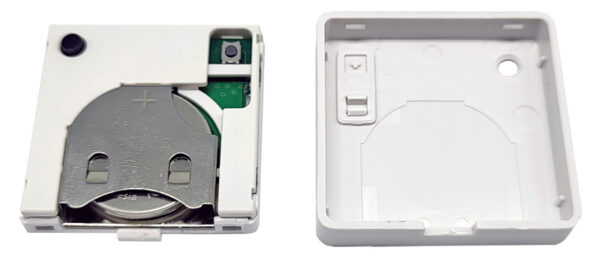
However, the sensor requires a WiFi-enabled Shelly Plus or Pro series device nearby that acts as a gateway so that the sensor can communicate with the Shelly Cloud. In our case, we used a Shelly Plug-S Plus socket for this.
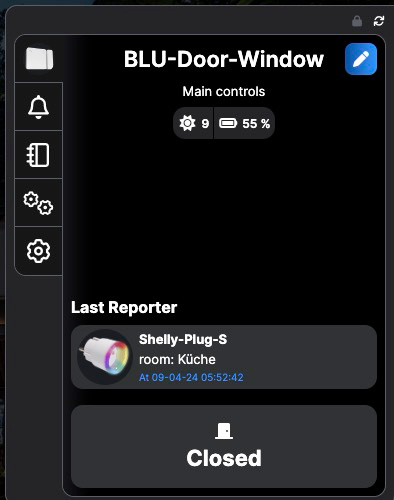
The sensor is attached to the frame and the window or door, as shown here in the motorhome, using the adhesive strips provided. This is done in such a way that the magnet is no more than 10 mm away from the edge of the sensor. The corresponding edge is marked with a small arrow.
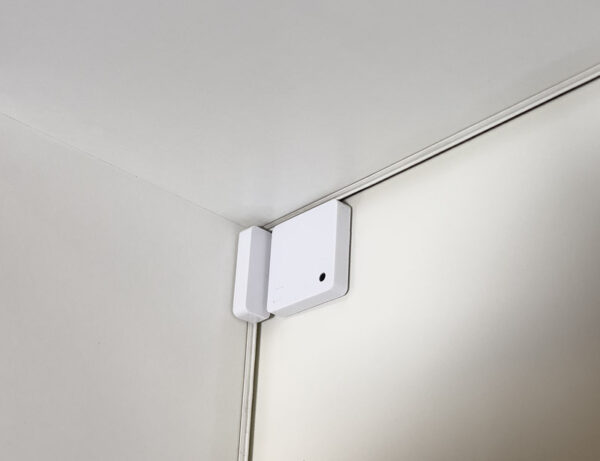
If the door or window is opened, the magnet moves away from the sensor and this reports the change via Bluetooth to the paired gateway (our Shelly Plug-S Plus). This can then be used to trigger a corresponding action.
It works in a similar way with the tilt sensor. Of course, the sensor must be attached to the window and not to the frame. As soon as the change in position is detected, the sensor sends a corresponding signal.
The ambient light in the room can be measured using the brightness sensor. It should be noted that the sensor does not automatically report the brightness value when there is a change. The current brightness value is only transmitted when the tilt sensor or the magnetic switch is triggered. Control based solely on brightness is therefore not possible if the window or door is not moved regularly.
Shelly H&T Gen3 Features …
Like the previous Shelly Plus H&T, the Shelly H&T Gen3 is a humidity and temperature sensor with a built-in e-Ink display that uses WiFi and Bluetooth for communication. New features of the Shelly Generation 3 devices (not just the H&T) compared to its predecessor include a better microcontroller with more memory and more computing power. This means that the Gen3 devices can also be retrofitted with new functions and commands in future. The Gen3 devices will also support the Matter protocol in future.
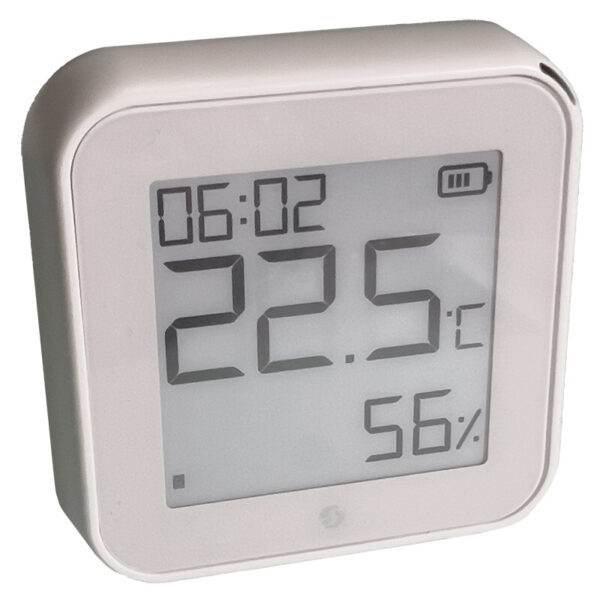
The first thing you notice is the H&T’s large display. The e-Ink display is very energy-saving, as it only requires power when changes are made to the display. The contrast is excellent and the display is also easy to read from the side. The display shows the current temperature and humidity, as well as the battery status, now also the time and small status icons such as WLAN signal, Bluetooth, cloud connection, etc.
There are no controls on the Shelly H&T Gen3. There is a reset button on the inside, but this can only be reached after removing the housing cover. We’ll see what it’s good for in the practical part of our test.
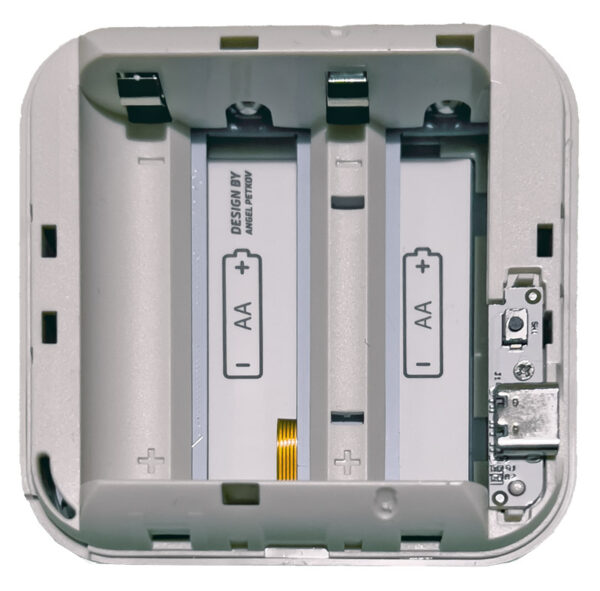
There are two small elongated holes on the back for hanging the device on the wall, for example. There is also a small stand that can be clicked into this.
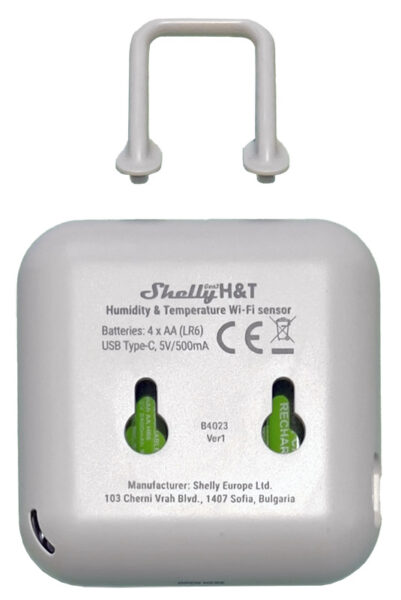
This allows the Shelly H&T to be placed upright. There is also a USB-C port on the side. This means that the device can also be operated without batteries.
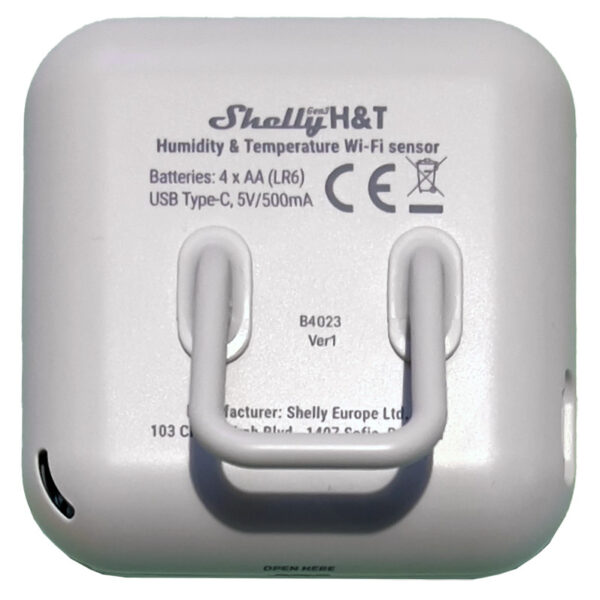
As a battery-powered device, the Shelly H&T Gen3 is not always online, even when it is connected to the WLAN. To save energy, the sensor is in sleep mode most of the time, where it only monitors temperature and humidity. If one of these variables changes by a certain value, the device wakes up and sends the change to the Shelly Cloud via WLAN. These thresholds can be adjusted in the configuration. Incidentally, the Shelly TRV thermostat used later also exhibits the same behavior. If you want to integrate these devices into an own automation solution such as Home Assistant, you must note that the devices cannot simply be queried at any time. We will also see how this can be solved in the practical section.
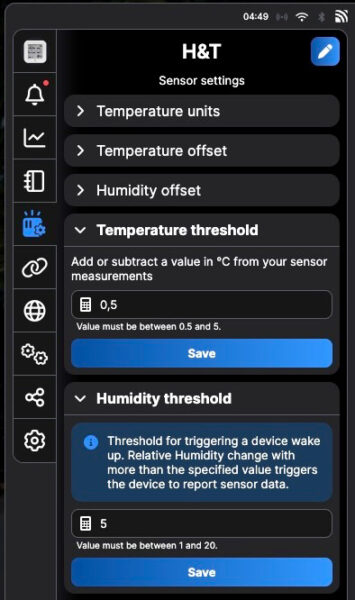
Shelly BLU Door/Window and Shelly H&T Gen3 Practical testing …
